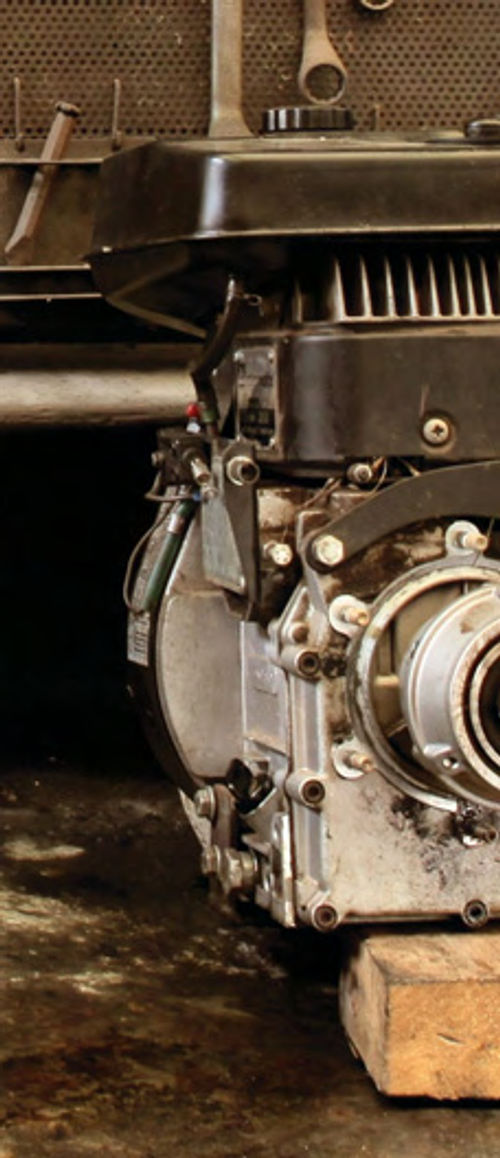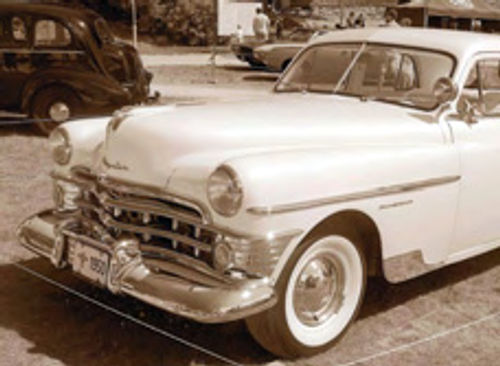How -to Battery Maintainers, Pt.2
This Time, We’ll Do a De-Sulfating Experiment With One Unit. Then We’ll Talk About the Ones We Liked Best.
LAST MONTH WE worked with six battery maintainers including the BatteryMINDer Charger/Maintainer. We’ll pick up here with some of the manufacturer’s claims regarding that unit:
A few of the claims published by VDC Electronics, Inc. regarding its BatteryMINDer Charger/Maintainer unit are:
• The charger will dissolve sulfates by generating just the needed range of frequencies and avoiding high voltages.
• It de-sulfates faster and more effectively than any known charger or stand- alone desulfator-conditioner.
• Automatically detects defective batteries.
• An external temperature compensation sensor helps to avoid damage during charging.
• When connected in parallel it can maintain up to six batteries.
Once again with the aid of a voltmeter and induction amperage meter I monitored its functions while in the float mode. The voltage readings bounced around rapidly from 13.28 to 13.32, while the amperage values would fluctuate between .0 (too low to register) and .1 amps. Note that these readings were obtained without the use of the external temperature sensor.
I especially like the assurance they give you by stating (and I paraphrase here) that if for any reason you don’t feel the BatteryMINDer performs as they say, and doesn’t increase your battery’s life, they will, up to one year after date of purchase, refund 100% of your money, including any sales taxes or shipping cost. Furthermore, the warranty is five years of free repair. Power consumption is rated at 2.0 amps max.
This unit is available at Northern Tool & Equipment (northerntool.com) or you can order directly fromthe manufacturer. (Note: When purchasing this BatteryMINDer from the manufacturer, the external temperature compensator is included with the charger/maintainer, at a total cost of $120. The one I purchased from North- ern Tool for $100 did not include it, but it’s available as a $20 option.)
They also offer other units which include a 6- and 8-volt maintainer, a solar- powered unit, and some used in aviation.
The manufacturer’s contact information is: VDC Electronics Inc., 147 D Woodbury Road, Huntington, NY 11743; visit the batteryminder.com.
Battery De-Sulfator Experiment
The manufacturers of the Xtreme and the BatteryMINDer charger/maintainers both speak to the negative effects of a battery becoming sulfated, so I wondered if it really was possible to use one of these two desulfators to resurrect a battery that had recently been pronounced dead.
Now, this is not a scientific test, nor am I following anyone’s specific guidelines. You know, it’s just a guy working in his garage.
The battery in question is three years old. I had removed this recently from a friend’s vehicle after it miserably failed a carbon pile load test. Under the specified load the voltage dropped to around 6 volts. Could this battery be brought back to life? This technology is all new to me and in the past I simply would have laughed if someone had suggested it. I verified the battery’s state of charge and checked each cell’s specific gravity to determine if it would be a possible candidate. All cells read 1:270, so it would appear to be a good choice.
Let’s take a moment to talk about specific gravity, and how you determine it. Checking specific gravity or looking at the “eye” (if your battery is equipped with one) will tell you your battery’s state of charge.
In most situations a battery hydrometer is needed to check specific gravity. One can be purchased at an auto parts store, but make sure to get the type that will actually give you a numerical reading, not the version with the five floating balls and a chart to equate the state of charge. The calibrated type has a floating bulb with a numerical scale on it to indicate specific gravity. This allows for a comparison of each battery cell, and a more exact reading. They also make one with a temperature compensation scale. This can be handy if you work in a wide range of temperatures.
Follow the directions that come with the battery hydrometer, but basically you will squeeze the rubber syringe to draw electrolyte from the battery, enough to float the indicator bulb inside the hydrometer.Make sure it’s floating freely, and not making contact with the top of the hydrometer or you will obtain a false reading. Where the fluid line is on this bulb is the specific gravity reading for that cell. A specific gravity reading of 1:270 indicates a fully charged battery at 80° F. If the battery temperature is below 80° F,subtract.004 for each 10° F, or add .04 for each 10° F above. In most situations this isn’t a big concern, but if you happen to be checking a cold battery out in your barn and it’s 30°F,1:250 specific gravity is the same as 1:270 at 80° F. Some variation in readings between cells is allowable, but usually the difference should be no greater than .050 points.
Now, which maintainer/desulfator should be used for this experiment? A coin toss chose the BatteryMINDer. It was connected in the maintenance/de- sulfate mode with the external temperature compensation sensor attached, and ran uninterrupted for two weeks. After that the battery was disconnected and left idle for 24 hours. This allowed any surface charge that might be present to dissipate naturally.
This battery is rated at 585 CCA (cold cranking amps). This gives us the information needed to load test the battery. The battery must maintain a minimum voltage of 9.6 @ 70° F after being load tested for 15 seconds. (Note, as the temperature gets cooler, the minimum voltage requirement decreases. For example 9.5V @ 60°F; 9.4V @ 50°F; 9.3V @ 40°F; and 9.1V @ 30°F).
So how did it do? It maintained 9.4 volts at 50°F. This is now an acceptable battery, trustworthy for daily use. The initial load test on this battery where the voltage fell to 6 volts was performed with the same equipment that’s now giving it a passing grade. Would I trust this “zombie battery” in my daily driver? Absolutely. Could an even higher under load voltage have been achieved? Possibly so with additional time connected to a desulfator.
My conclusion: Battery desulfators work! Certainly not all batteries can be reclaimed, but without question some can.
A Few More to Consider
I haven’t worked with the following maintainers, so the information given here was provided by the units’ manufacturers.
Battery Tender Junior Charger/ Maintainer. This unit is compact, with the appearance of a large transformer plug. The “body” plugs directly into the electrical outlet and has a 12-foot-long output cord.
It includes clips along with terminal connectors for a permanent connection. It has a maximum charger rate of .75 amps, and when it reaches the “float” or “storage” mode, it maintains a low constant volt- age, with minimal charger current.
The maintainer has a single LED indicator to confirm status. Here are a few of the readings:
RED light on steady=Battery connected properly and the battery is charging.
GREEN light flashing=Battery is greater than 80% charged.
GREEN light on steady=Battery is fully charged.
ORANGE light=this most likely indicates either a poor connection to the battery, or that the battery is sulfated.
Power consumption is .4 amps. Its components are made in the USA, but are assembled elsewhere. It can be purchased from amazon.com, and is priced at $22. It comes with a five-yearlimited warranty. Repairs are free the first 90 days, and after that there is a $7.95 evaluation fee any time it is returned for repair within the remaining warranty period. It is listed as being available in both 12- and 6-volt versions.
The manufacturer’s contact information is: Deltran Corp., 801 International Speedway Blvd., Deland, FL 32724; visit batterytender.com.
(For a look at the larger 4-bank Battery Tender Charger/Maintainer, see last month’s installment.)
Solar Battery Maintainer, manufactured by Powerstream. Here is a made- in-the-USA choice for those with a vehicle in storage where electricity isn’t an option or you’re seeking an approach that might be considered more “green.” They offer a 5-watt unit that has a 12.75” x 7.25” x 1.125” panel for $156. Higher wattage systems are available upon request. The solar panel can be placed on the dashboard or located remotely. It includes 17’ of cable to situate the solar panel, but if needed it could be extended farther using 12- gauge cable.
These systems are designed to maintain a fully charged battery, not recharge one that has become discharged.
Here are a few of their claims:
• Pulsed charging algorithm can dis- solve sulfates.
Can extract useful power from the solar panel even at low sun angles.
• Electronic overcharge protection and LED flashes to show operation.
• It can be used for lead acid batteries between 6 and 28 volts, including 6, 8, 12, 16, 18, 24 and 28V.
Systems are warranted for one year and are 100% made in the USA. For additional information or to order, contact: Powerstream Technologies, 1163 S. 1680 West, Orem, Utah 84058.
My Top Picks…
As for my personal favorites among the ones I’ve used and reported on last month, the convenience of the Schumacher (on board) charger/maintainer is hard to beat for applications like my motor home chassis battery, tractor and cargo trailer. While it’s not a desulfator, it certainly has prolonged the life of many batteries. It’s a durable unit that has stood up well over time.
The desulfator-type charger/maintainers are definitely going a step further in pro- longing battery life, so that would put both the Xtreme charger and BatteryMINDer at the top of my list.
The BatteryMINDer is my most recent addition, and I can’t see any reason why it would disappoint me. I particularly like its ability to parallel maintain up to six batteries at once. This is handy when dealing with the multiple coach batteries of a motor home. Maybe I am just old- fashioned, but I like the idea of an external temperature sensor that can be physically connected to the battery. The ability to choose a 2-, 4- or 8-amp charge rate also is nice. And should it fall short of my expectations for some reason, I will take them up on their one-year satisfaction guarantee.
I have had the Xtreme XC100 charger in use on my daily driver for about six months and it has performed flawlessly. It’s quick and simple to hook up. If you are looking for minimal interaction with a maintainer, and want the benefits of a desulfator, then stick with the Xtreme. If you don’t have the need for multiple battery applications, it then becomes the best price performer in my opinion.
If you find yourself considering a maintainer that’s not mentioned in this article, use the points of comparison in last month’s chart or the text as a guide. Decide what best fits your needs, and budget, then make an informed decision. You can spend $10 or 10 times that or more. The one common thread is that all of these mentioned maintainers will benefit your battery’s health and save you money in the long run.


















